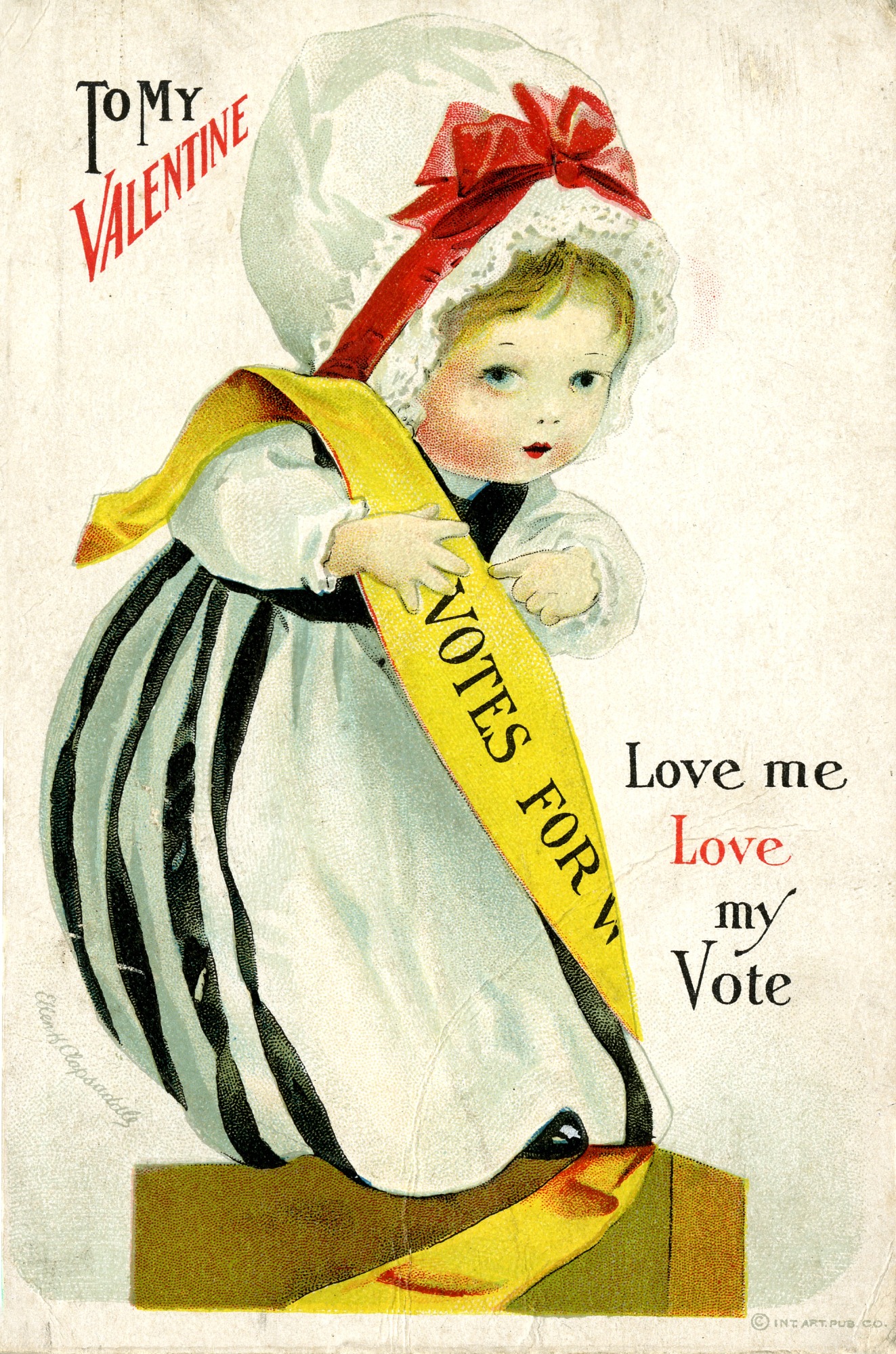These vintage valentines pushed for a woman’s right to vote
During the campaign for the 19th Amendment, suffragists used holidays like Valentine’s Day to promote the cause of “Votes for Women.” This card was an appeal to men to support suffrage by suggesting that women respect and love men who support the cause.
The National American Woman Suffrage Association (NAWSA) began a postcard campaign in 1910, both to raise awareness and as a fundraiser. The cards could be funny, serious or sentimental, and some used patriotic symbols and logical arguments to make their case for women’s right to vote.
This was one of many tactics used by NAWSA, which was formed in 1890 with the merging of two previously rival organizations: the National Woman Suffrage Association (NWSA) led by Elizabeth Cady Stanton and Susan B. Anthony, and the American Woman Suffrage Association (AWSA) led by Lucy Stone, Henry Blackwell and Julia Ward Howe.

Not all women were welcomed into the suffrage movement, and in some cases, women of color were excluded from leadership or participating in events. Stanton and Anthony were active abolitionists but had opposed the 15th Amendment if it would enfranchise only African American men and not women. After its ratification in 1870, they and their successors focused their organizations on voting rights instead of more expansive women’s rights. It also led them to collaborate with people who did not believe that voting rights should extend to men and women of all races. Their speeches and writing of this time invoked race, class, education and nativism as arguments for woman suffrage.
When the 19th Amendment became law in 1920, it said women could not be excluded from the polls because of their sex, but it did not guarantee the ballot. Citizenship laws, poll taxes, threats and violence barred African American, Latina, Native American, Asian American, immigrant, and poor women from voting. NAWSA then became the League of Women Voters.
For more valentines from across history and art, explore our collections.

